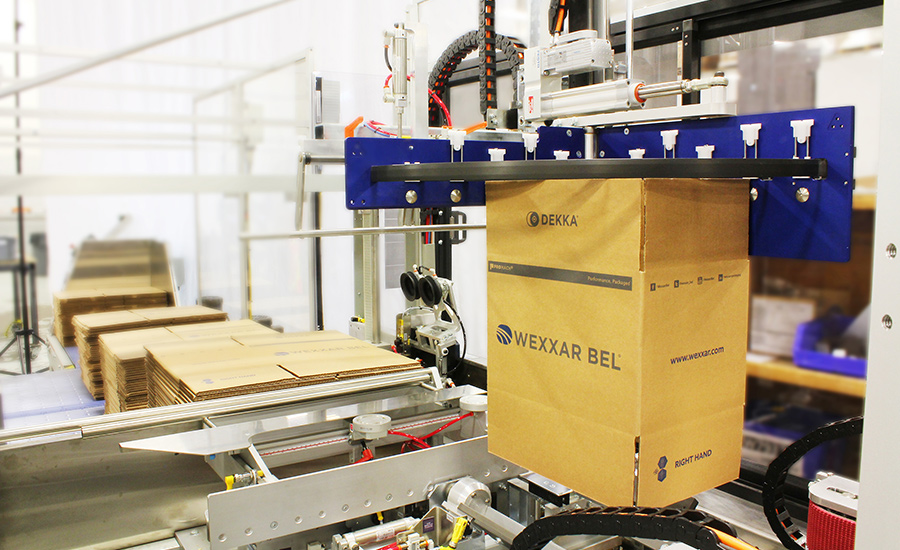The goal of secondary packaging is to ensure the integrity of a product during storage and transportation, making sure it reaches the hands of the user in the same state as it was made.
Rather than manually forming cases, which is inefficient and unergonomic, automatic case forming can make cases at a rate of 20 or more per minute. This allows for continuous case forming, a clear advantage for the customer. Once the case former is programmed, an employee simply loads case blanks into a magazine and the machine does the rest. Certain machines also have expandable magazines that allow it to be easily and continuously loaded on the fly for non-stop production.

Image courtesy of Wexxar Delta
Additionally, the case former can be fitted with an auto adjustment option that allows the machine to automatically perform case size adjustments, significantly reducing the amount of training required while also optimizing operator productivity by freeing up time spent on the machine for other tasks. These machines have become extremely intuitive and can be easily managed with minimal training, ideal for operations with multiple operators or shifts.
When it comes to packing, one size does not fit all. Depending on your product, flow rate and pack configurations, it’s critical that your packing system is adaptable. With an increasing number of SKUs and pack configurations, having one system with the ability to meet changing applications can increase your production output while reducing labor costs. This creates the need for modular solutions that include the right case former, product delivery conveyor, work cell and sealer that best meets your application.
The goal is to create a packing process that’s flexible to grow and change with your production needs. For example, for companies that pack manually, some are installing operator pack cells. The basis behind pack cells is flexibility; certain work cells may be turned on or off, depending on things such as operator absence or the need to temporarily relocate labor to another part of the line. This ability to freely change the number of work cell operators is done with a bypass system, which involves product advancing to the next available operator, even when an upstream or downstream operator is not present.
Once cases are packed with product, they’re moved to a semi-automatic or fully automatic case sealer. Again, technology is performing many of these secondary packaging tasks that were formerly done manually. Finally, products are delivered down by flow conveyors, for operators to easily grab and handle in preparation for shipping.
As buying preferences such as more product choices and e-commerce continues gaining in popularity, the need to expedite secondary packaging becomes more central than ever before. Automation allows companies to gain a competitive advantage in areas such as case forming and pack cells, and any advantage these days may mean the difference between success or failure.

